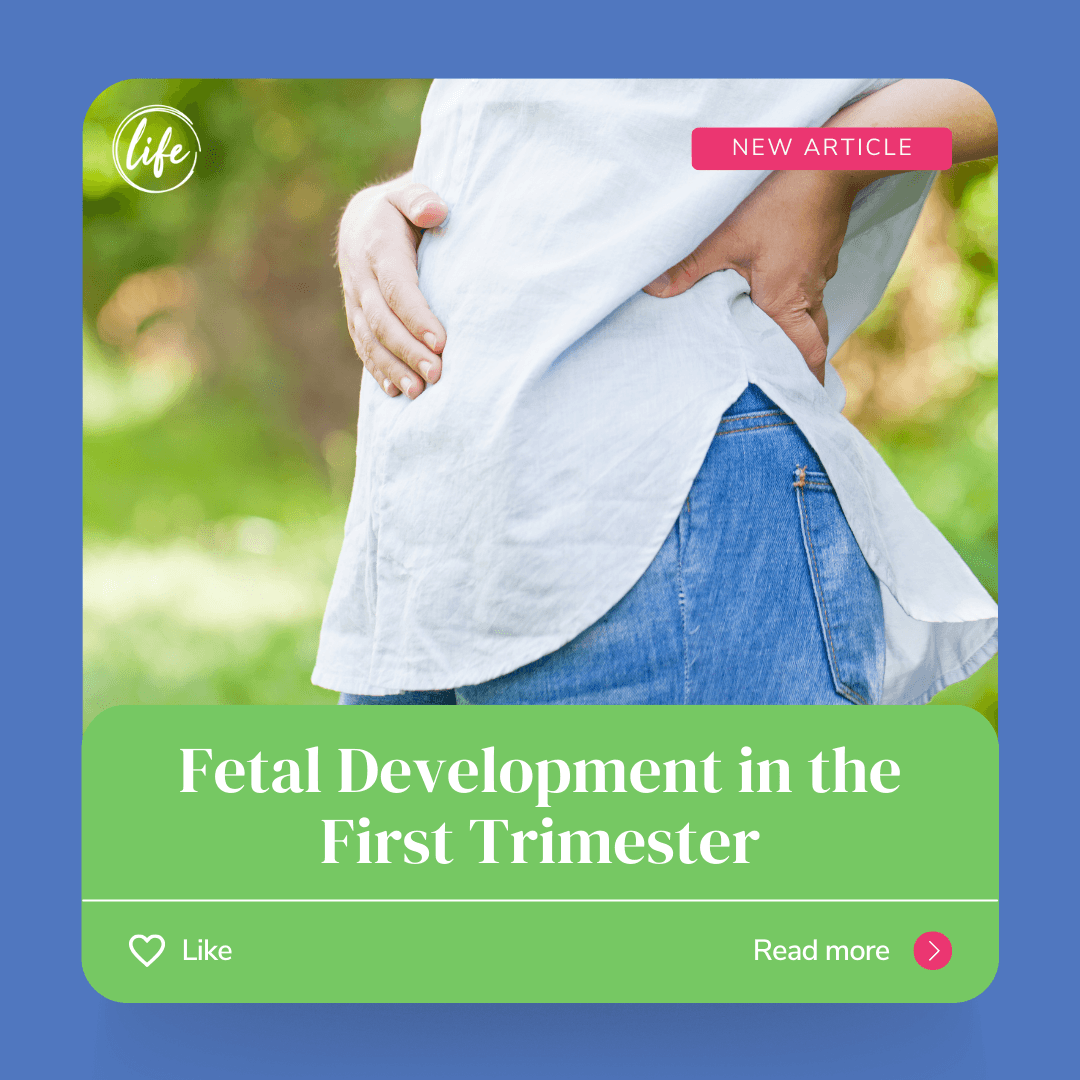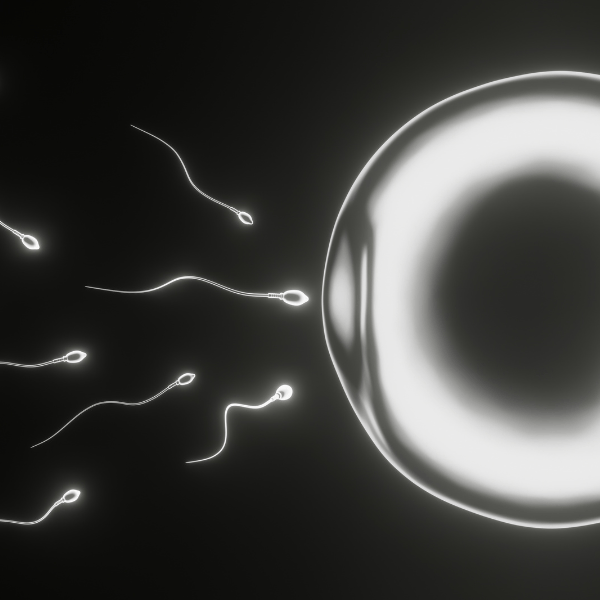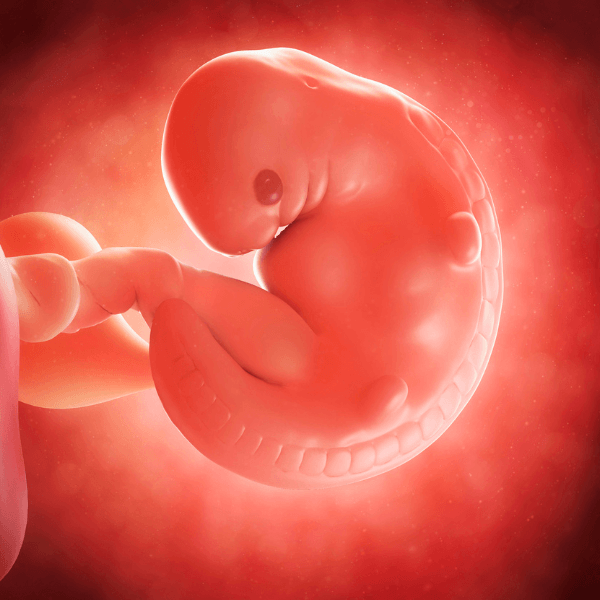
 A fetus is a human being from the moment of conception. From conception, they have already begun growing and developing! Here’s a weekly breakdown of fetal development in the first trimester:
A fetus is a human being from the moment of conception. From conception, they have already begun growing and developing! Here’s a weekly breakdown of fetal development in the first trimester:
Weeks 1 & 2: During the first two weeks of a woman’s pregnancy, she’s not actually pregnant! She menstruates to prepare her uterus for a pregnancy. About two weeks later, she ovulates as her ovaries release a fertile egg into the fallopian tubes.
Week 3: In week 3, the sperm travels up the fallopian tubes and fertilizes the egg. The resulting single-celled zygote is the earliest stage of growth for the developing human being. From the moment of conception until birth nothing further genetically will be added. From the moment of conception DNA will not only identify the beginning human as a human but will identify that specific human being from that point forward. Our physical characteristics — eye, skin and hair color, sex, etc — are already determined. According to research from twin and adoption studies, even our personalities are 30% to 60% determined by our genetics. As the zygote travels from the fallopian tubes to the uterus, it divides into a cluster of cells known as the blastocyst.
Week 4: In the uterus, the blastocyst implants along the uterine lining where it will become an embryo. The placenta begins to form and nourish the growing embryo.
 Week 5: During week 5, the embryo’s neural tube forms, which will soon connect the brain, spinal cord, and other key elements of the central nervous system. The circulatory system begins forming, as does the heart. By the end of week 5 (just 21 days after fertilization), the heart is beating about 110 times per minute!
Week 5: During week 5, the embryo’s neural tube forms, which will soon connect the brain, spinal cord, and other key elements of the central nervous system. The circulatory system begins forming, as does the heart. By the end of week 5 (just 21 days after fertilization), the heart is beating about 110 times per minute!
Week 6: By week 6, so much growth has taken place! The embryo has taken shape, developing structures that will eventually become eyes, ears, mouths, arms, and legs. Additionally, blood cells form and begin circulating throughout the body.
Week 7: During week 7, the partially formed facial features and limbs take shape and become more prominent. Internal sex organs form. The embryo’s head grows in size and retinas and nostrils begin forming. Finally, bones replace soft cartilage.
Week 8: By week 8, eyes and ears become visible and more prominent. The embryo’s major organs and systems are developing. Fingers begin forming and the neck straightens.
Week 9: By week 9, teeth (in the gums) and taste buds begin forming. The embryo’s limbs continue to grow and toes become more visible. By week 9 (7 weeks after conception), the embryo looks more human!
Week 10: By week 10, the embryo is considered a fetus. Its limbs and digits are fully formed and nails are developing.
Week 11: By week 11, the fetus’ external genitals develop. The fetus begins opening and closing its mouth and fists. It may also move its functional limbs — but it’s too soon for mom to feel these movements.
Week 12: By the end of the first trimester, the fetus’ facial features are more pronounced and all major organs have formed. Its circulatory, digestive, and urinary systems are functional.
Week 13: The fetus is producing urine and releasing it. Bones are beginning to harden, particularly around the skull, as the fetus’ head becomes more proportionate to its body. Vocal cords form.
Learn more about the various stages of fetal development (conception, first, second, and third trimester) and don’t forget to follow us on social media (Facebook, Instagram, and TikTok).
Sources: